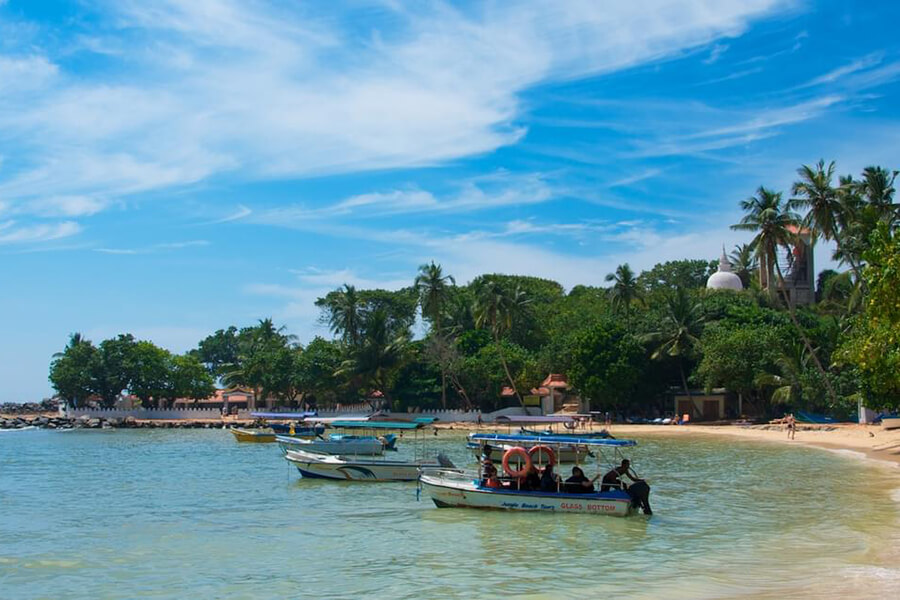Introduction to Ritigala, located in the Anuradhapura District of Sri Lanka, is a serene and mystical destination renowned for its ancient ruins and natural beauty. Nestled in the heart of the island’s cultural triangle, Ritigala is a lesser-known but captivating site that offers visitors a unique blend of historical significance and lush landscapes. The Ritigala Mountain Range, with its ancient monastic complex and rich biodiversity, provides a tranquil escape from the hustle and bustle of modern life.
Historical Background Ritigala is home to an ancient Buddhist monastic complex dating back to the 1st century BC. The site was established by King Valagamba and served as a prominent center of meditation and learning. The Ritigala monastery was known for its austere and ascetic lifestyle, attracting monks and scholars from across the island. The site’s unique combination of natural features and architectural elements reflects the deep spiritual practices of its early inhabitants.
Key Attractions in Ritigala
Ritigala Monastic Complex
- The Ritigala Monastic Complex is the main attraction of the site, comprising a series of ancient ruins scattered across the forested slopes of the Ritigala Mountain Range. The complex includes meditation cells, bathhouses, and various religious structures. The well-preserved ruins, with their intricate carvings and stonework, provide a fascinating glimpse into the monastic life of ancient Sri Lanka.
Ritigala Forest Reserve
- The Ritigala Forest Reserve is a haven for nature enthusiasts and offers a serene environment for hiking and exploration. The reserve is home to a diverse range of flora and fauna, including endemic species and medicinal plants. Visitors can enjoy scenic trails that wind through the forest, offering opportunities to observe wildlife and appreciate the natural beauty of the area.
Ancient Water Management Systems
- Ritigala features an impressive system of ancient water management structures, including reservoirs, channels, and wells. These sophisticated engineering feats were designed to harness and distribute water throughout the monastic complex and surrounding areas. The remnants of these systems highlight the advanced knowledge and skills of the ancient builders.
Buddhist Relics and Sculptures
- The site is adorned with various Buddhist relics and sculptures, including statues of the Buddha and intricately carved stone artifacts. These relics, often found in the meditation cells and around the monastic complex, provide insight into the religious and artistic practices of the time.
Ritigala Nature Trail
- The Ritigala Nature Trail offers a scenic and tranquil hike through the forested slopes of the mountain. The trail is relatively easy to navigate and provides stunning views of the surrounding landscape. The hike is an excellent way to experience the natural beauty of Ritigala and explore the site’s historical and cultural features.
Cultural and Archaeological Significance Ritigala is a site of significant cultural and archaeological importance. The ancient monastic complex reflects the spiritual and intellectual achievements of early Buddhist communities in Sri Lanka. The combination of natural beauty and historical ruins makes Ritigala a unique destination for those interested in exploring the island’s rich heritage.
Exploring Ritigala Ritigala can be explored on foot, with well-marked trails and paths leading to the various ruins and natural features. Visitors are encouraged to wear comfortable footwear and bring water, as the site involves some hiking and walking. Guided tours are available and provide valuable insights into the history and significance of the site.
Accommodation and Dining Accommodation options near Ritigala are limited but include guesthouses and small hotels in the nearby town of Habarana. For a more extensive selection of accommodations and dining options, visitors may choose to stay in Anuradhapura or Dambulla, both of which are within a short drive of Ritigala. Local eateries in the area offer traditional Sri Lankan cuisine, including rice and curry, hoppers, and other local dishes.
Best Time to Visit The best time to visit Ritigala is during the dry season, from December to April, when the weather is more favorable for hiking and exploration. The site can be visited year-round, but the dry season offers more comfortable conditions and better visibility.







